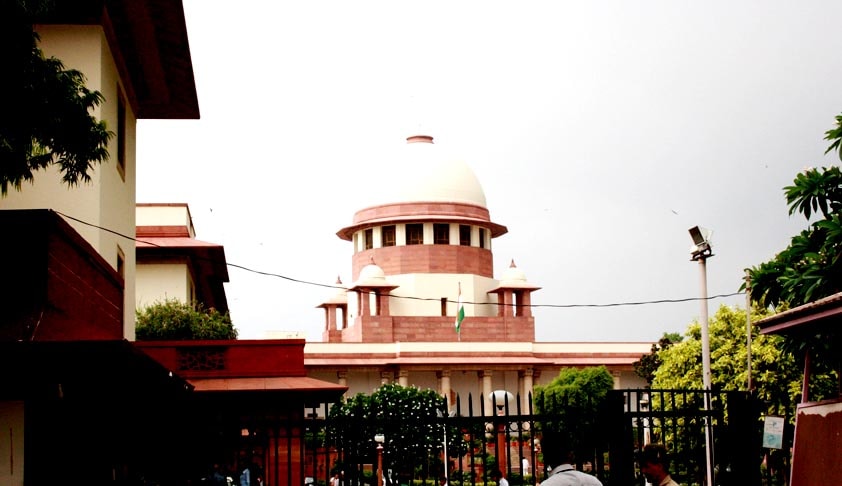- Home
- /
- Top Stories
- /
- Centre Tries To Convince The SC...
Centre Tries To Convince The SC About Its Sincerity In Filling Judges’ Vacancies
LiveLaw Research Team
14 Sep 2016 4:00 PM GMT
If the number of judges’ vacancies in the high courts is any indication, the challenge before the Centre and the SC Collegium is indeed a logjam, a situation in which you cannot make progress easily, because of the sheer magnitude of the problem. The 24 high courts currently have 485 vacancies, of which 268 are for permanent judges, and 217 for additional Judges. Therefore, the...
If the number of judges’ vacancies in the high courts is any indication, the challenge before the Centre and the SC Collegium is indeed a logjam, a situation in which you cannot make progress easily, because of the sheer magnitude of the problem. The 24 high courts currently have 485 vacancies, of which 268 are for permanent judges, and 217 for additional Judges. Therefore, the Attorney General, Mukul Rohatgi’s assurance to the Supreme Court today, that there was no logjam from the Government, must come as a surprise.
Rohatgi made this assurance, when the bench comprising the Chief Justice, TS Thakur and Justice AM Khanwilkar, took up for hearing two writ petitions seeking the Court’s intervention to fill the vacancies through the judicial route.
Of these, one was filed by Ashwini Kumar Upadhyay, a member of the Supreme Court Bar Association, filed in April this year. He sought a direction to the Centre to double the number of Judges, which is essential to secure the fundamental right of fair trial and speedy justice to the citizens.
Upadhyay, who claims to be the official spokesperson of BJP’s Delhi unit, also pleaded for the creation of the All India Judicial Service (AIJS).
The second petition was filed by the 1971 war veteran Lieutenant Colonel Anil Kabotra, which was first heard by the Supreme Court on 12 August, when the Chief Justice Thakur first made the ‘logjam’ comment and accused the Centre of being responsible for it.
Today, it was Rohatgi’s turn to return that compliment, by accusing the judiciary itself as being responsible for the logjam.
However, many felt Rohatgi’s attempt to give a clean chit to the Government lacked substance. He claimed that the filling up of judicial vacancies is its topmost priority, as if it is the claim that matters in this blame-game.
Another notable quote from Rohatgi today was this: “The process of judicial appointments is like a race. If you start on time, you end on time. The High Courts have, by and large, delayed starting the race. The delay on the High Courts’ part is not just a case of months, but these are five-year and six-year vacancies”.
To substantiate his point, Rohatgi referred to the case of the Allahabad High Court, which has the oldest judicial vacancies, dating back to 2007. As it is the High Collegium, which has to initiate the appointment process, six months before a vacancy arises, (as given in the Memorandum of Procedure), he suggested that it is the High Courts which must bear the blame for this inordinate delay.
Chief Justice Thakur agreed that the process of appointing Judges is arduous, but stuck to his view that the process is stuck after the SC Collegium cleared the proposals.
In August, Chief Justice Thakur had alleged, during the hearing of this case, that the Government was bringing the entire judiciary to a “grinding halt” by sitting on recommendations of the SC Collegium on appointment and transfer of Judges to High courts. He wanted the Centre to furnish a complete report on the status of 74 names the Collegium had recommended for High Court judgeships.
Today, Rohatgi did indeed give a report, but in a sealed cover, thus ruling out transparency over the status of these 74 appointees. The Centre continued to be opaque by telling the court that it has cleared one name for appointment as Madras high court Judge, and appointments to Kerala and Chattisgarh High Courts, besides transfers of two High Court Judges.
The Madras High Court currently has 18 vacancies for permanent Judges. Both the Chhattisgarh High Court and Kerala High Court, have nine vacancies each for permanent Judges. It was not clear from Rohatgi’s submission today, how many of these vacancies are likely to be filled immediately.
As the exchange of information between the bench and the Government continues to be opaque, in a sealed cover, the status of appointment of Judges in the High courts will continue to be under wraps.
Observers say that this non-transparency over the high court appointments only gives credence to the grievance of Justice J Chelameswar, the fifth member of the SC Collegium, who not only decided to stay away from its meetings, but wrote a strong letter to the CJI, seeking accountability and openness.
Reports suggest that Chief Justice Thakur is yet to respond to Justice Chelameswar’s letter.


